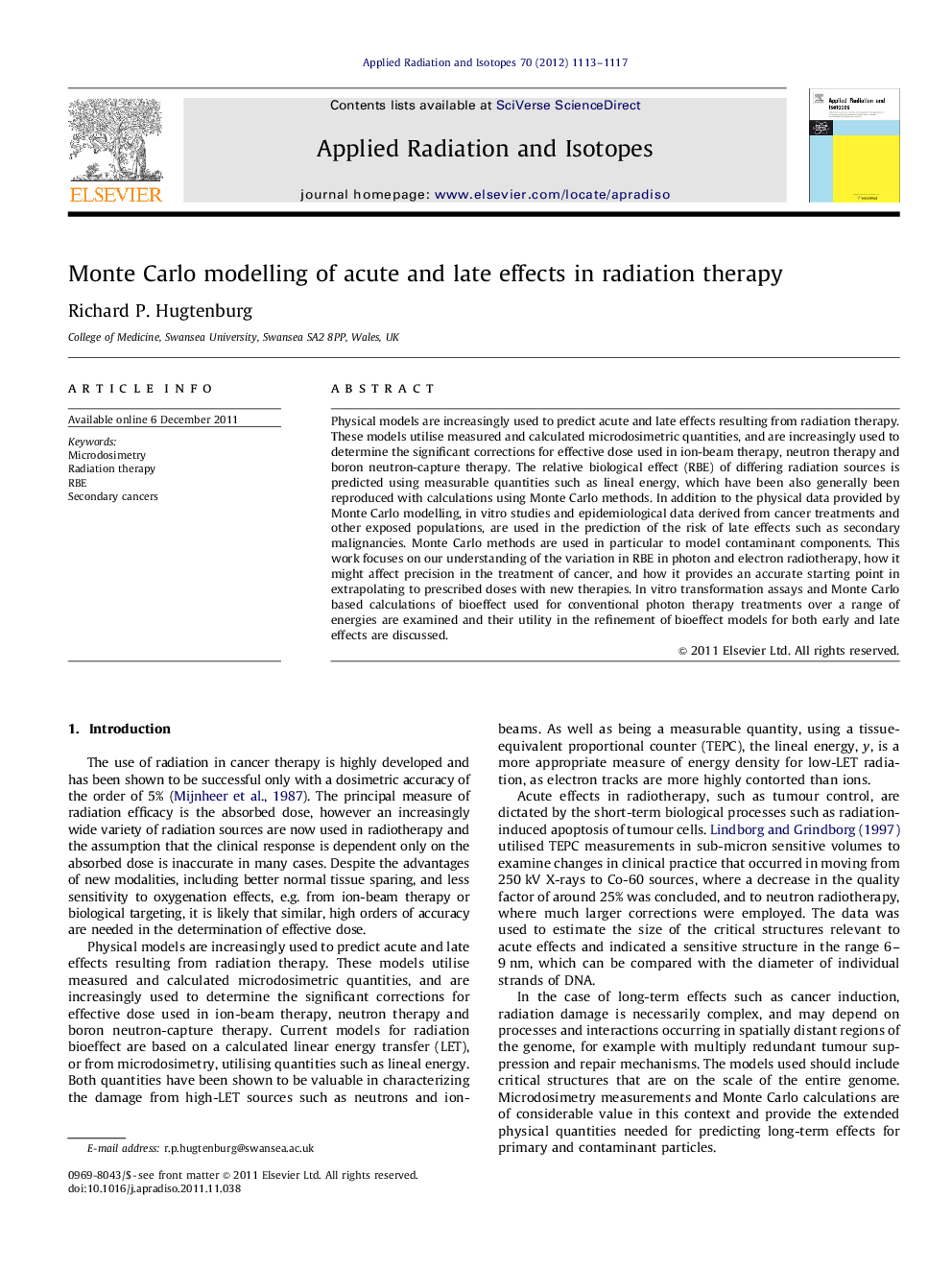| Article ID | Journal | Published Year | Pages | File Type |
|---|---|---|---|---|
| 1876117 | Applied Radiation and Isotopes | 2012 | 5 Pages |
Physical models are increasingly used to predict acute and late effects resulting from radiation therapy. These models utilise measured and calculated microdosimetric quantities, and are increasingly used to determine the significant corrections for effective dose used in ion-beam therapy, neutron therapy and boron neutron-capture therapy. The relative biological effect (RBE) of differing radiation sources is predicted using measurable quantities such as lineal energy, which have been also generally been reproduced with calculations using Monte Carlo methods. In addition to the physical data provided by Monte Carlo modelling, in vitro studies and epidemiological data derived from cancer treatments and other exposed populations, are used in the prediction of the risk of late effects such as secondary malignancies. Monte Carlo methods are used in particular to model contaminant components. This work focuses on our understanding of the variation in RBE in photon and electron radiotherapy, how it might affect precision in the treatment of cancer, and how it provides an accurate starting point in extrapolating to prescribed doses with new therapies. In vitro transformation assays and Monte Carlo based calculations of bioeffect used for conventional photon therapy treatments over a range of energies are examined and their utility in the refinement of bioeffect models for both early and late effects are discussed.
► Examines the use of Monte Carlo based microdosimetry calculations in radiotherapy. ► Suggests interpretation of recent in vitro experiments showing large variations in RBE with low-LET sources.
